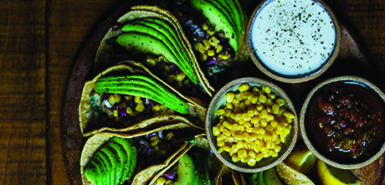
Just one-sixteenth of a saltine cracker is enough to cause damage in someone with celiac disease—mere crumbs.
This means that any of us hoping to serve meals free from gluten must pay attention to much more than our ingredients alone. We must consider the entire kitchen as we begin any gluten-free cooking adventure, everything from food storage to kitchen appliances.
Read on for six simple and effective tips to help you dish up 100 percent gluten-free meals with peace of mind.
1. Wash Up
Registered dietitian McKenzie Hall, cofounder of Nourish RDs, suggests beginning any gluten-free food preparation with hand washing. As even a crumb of gluten-containing food is enough to cause a negative reaction, the need to wash your hands every time you come across a gluten-containing ingredient or surface cannot be stressed enough.
2. Separate your storage
Food storage is not something that typically comes to mind when considering gluten-free safety, yet it is an essential component. Designate a specific cupboard, drawer and perhaps even the top pantry shelf as gluten-free zones to be sure no gluten containing crumbs are introduced. As a separate freezer may not be an option, prevent contamination by sealing ingredients securely within a zip-top freezer bag.
3. Manage your mise en place
Before you begin cooking, gather all your ingredients and identify whether or not hidden sources of gluten may be present. Sneaky sources include bouillon, artificial bacon bits, malt vinegar, wonton wrappers, dressings, sauces, seasonings, yogurt, and even colors or flavorings if they have been produced outside of North America. If you are uncertain, call the manufacturer to determine whether or not gluten is a concern.
4. Stock up on spatulas
If you are able to, purchase a separate set of utensils solely for the use of gluten-free food preparation. Please do as this will greatly reduce the risk of cross-contamination. Incorporating clean and separate utensils, cutting boards, pots into your kitchen, while avoiding the use of porous equipment such as wooden or plastic cutting boards are key to kitchen safety. Kim Koeller, founder of Gluten Free Passport, recommends designating a separate toaster and fryer for gluten-free cooking, as well as separate pots and strainers for gluten-free pasta.
5. Consider your condiments
Hall advises any gluten-free cook to buy separate condiments for gluten-free cooking to prevent cross-contamination of gluten. Consider doing so for condiments such as peanut butter, jam, jelly, cream cheese, mayonnaise, hummus and butter. Label each item with a ‘gluten free’ sticker or a red rubber band to let friends and family know not to dip a gluten-covered utensil inside, because once a gluten-drenched knife enters the peanut butter jar, it is no longer gluten-free.
6. Clean up the crumbs
While you most likely clean and sanitize your kitchen counters on a daily basis, when was the last time you cleaned your cupboards, pantry, or drawers? If gluten-containing foods, bread in particular, are being served in your kitchen, then crumbs should be a concern. Each time you reach into your silverware drawer, which is often, you are presenting the opportunity for crumbs to fall in and pollute knives, forks, spoons and other utensils with gluten.
 /a>
/a>
 /a>
/a>
 /a>
/a>